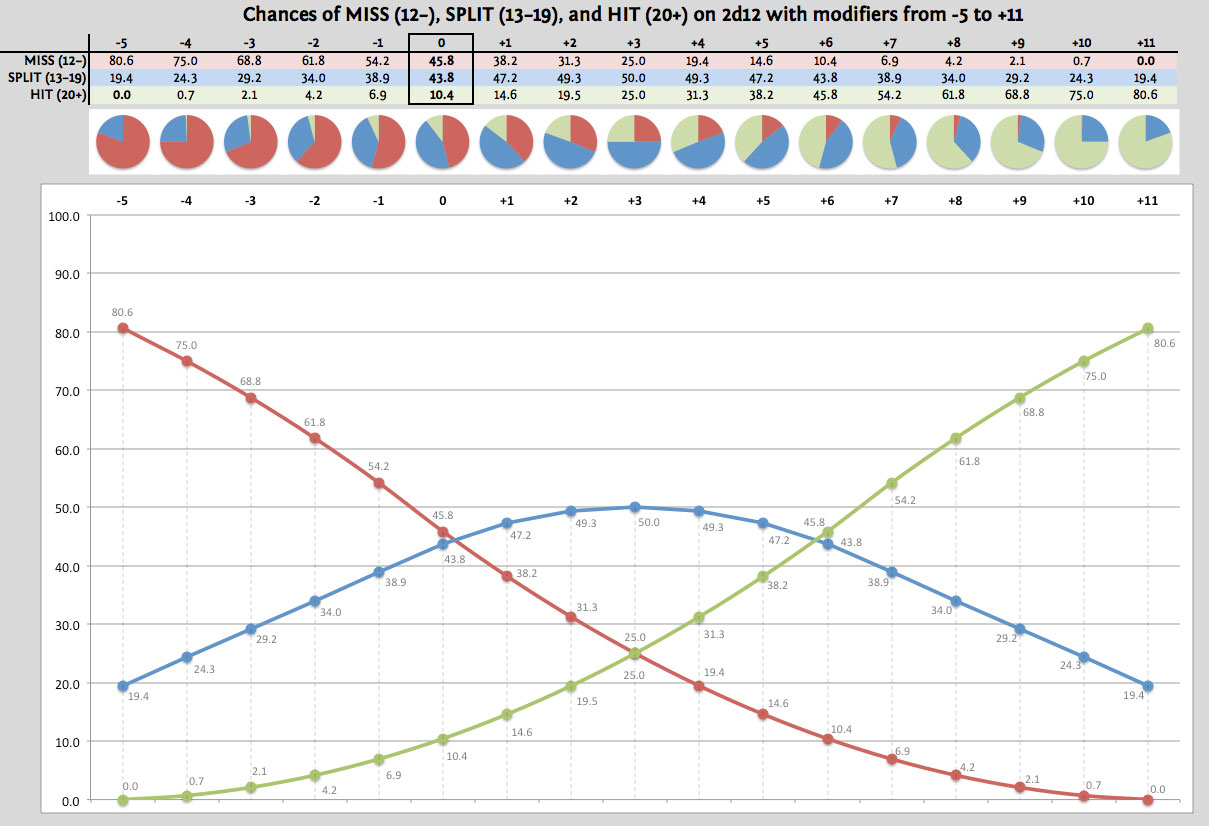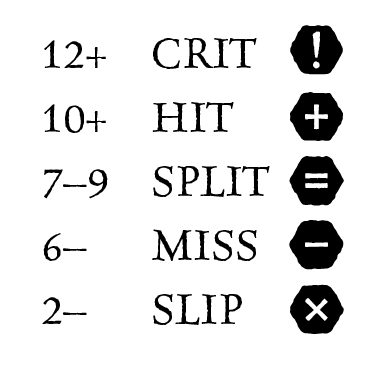
Beer and Perilous Wilds…. ahhhhhh.
Beer and Perilous Wilds…. ahhhhhh.

Beer and Perilous Wilds…. ahhhhhh.
Marshall Miller just brought to my attention the fact that L&B’s 20 Dungeon Starters, by Mr.
Marshall Miller just brought to my attention the fact that L&B’s 20 Dungeon Starters, by Mr. Miller and Mark Tygart, has been nominated for best RPG supplement over at BoardGameGeek. How do you like that!
Testing, testing, 1, 2, 3…
Testing, testing, 1, 2, 3…


I knew this day would come. I’ve now got a group where EVERY player has burned their luck down to 5, 4 or 3.
I knew this day would come. I’ve now got a group where EVERY player has burned their luck down to 5, 4 or 3.
I feel like I should offer them some way to redeem themselves, but then, they spent it, so…
Thoughts?
Struggling with my cleric to properly use and explore the bless/curse move.
Struggling with my cleric to properly use and explore the bless/curse move.
I’ve seen one or two examples that rely on the god in question being vindictive or wrathful and having domains such as Fire or Pain.
however my player is adamant she follow the good-natured child-god of Flowers, Growth, and Kindness.
One answer is that because of this array of beliefs she shouldn’t really be getting into fights and such, but it seems unfair to deny her gameplay because she wants to be a kind cleric.
I have one or two ideas but I’m interested to hear other people’s anecdotes of interesting curses and blessings drawn from not-obvious domains
For my next session my party ventures into a landscape of dizzying cliffs and perilous rock-cut staircases.
For my next session my party ventures into a landscape of dizzying cliffs and perilous rock-cut staircases. I envision the idea of there being ziplines for the locals to get around, and I want my party to also take ziplines.
I’m trying to think of some kind of rule to represent the benefit of ziplines over walking. Perhaps making a Thread where the final knot is “arrive at destination” and the zipline is an instant advance-1-knot whilst I withhold a Judge move to regress them by 1 knot (i.e. they get lost or took a wrong turn)
Anyone got any thoughts on other ways I could represent shortcuts, and if there is a move I could use like
“use Zipline roll + DEX
10+ make it across
7-9 pick from
* something slips out of your bag, lose an item
* you get vertigo burn WIS
* something else?
Any and all thoughts welcome
Feel free to throw dice at me, but with our games being very campaign-oriented (vs.
Feel free to throw dice at me, but with our games being very campaign-oriented (vs. one-shot/short multi-shot), we’ve started playing Freebooters on the Frontier with 2d12 instead of 2d6!
The finer granularity leaves more “headroom” to accommodate Freebooters’ inevitable stacking of ability score bonuses, move effects, class bonuses, spell effects, magic items, and other boons (and banes) without the game becoming unplayable due to characters never failing at their “main thing” (or ANYTHING as players learn to game the system.)
Some aspects of the base AW engine (such as “6– / 7–9 / 10+”) need to be re-scaled, but leaving class abilities and move effects as written for 2d6 makes a long-term game more fun and challenging. The scale for ability score modifiers took some time to tune; it is NOT a straight doubling) and in fact, we ultimately settled on a core mechanic that looks right but is in fact more “cruel” (mathematically speaking): 12– / 13–19 / 20+. This results in a feel that’s more OSR-like, with some cool side effects too, such as a more even progression of character level across repeated sessions and a tendency for more “Split” roll results in general (the middle bracket of the mechanic).
You may have seen my recent 2d6 AW math charts. Here is one showing how things work with 2d12, plus a set of pie charts to help you immediately visualize the difference. The idea is to get more mileage out of thespaces between the canonical plusses and minuses!
I’m hoping to publish my “d12 World” conversion kit this summer.


Cosmic Powered RPG Utilities V1.1 Release
Cosmic Powered RPG Utilities V1.1 Release
Originally shared by NE
Cosmic Powered RPG Utilities V1.1 Release
Random generators and utilities for the roleplayer and GM alike!
https://jteamdevelop.github.io/CPXUtilities/
Tools: Hexmap Area Editor/Generator, Fantasy Plot Generators (2), City/Stronghold Generator (4), Perilous Wilds Dungeon Generator, Generic Area Builder, People/Creature Generator, Traveller RPG Star System Generator
All web based, and data can be saved to your browser, so it is there when you come back.
For reasons I’ll detail in the future, I have started to use symbols and words in my descriptions of move results.

For reasons I’ll detail in the future, I have started to use symbols and words in my descriptions of move results.
One of the my favorite new game mechanics in Perilous/Freebooters is DURATION.
One of the my favorite new game mechanics in Perilous/Freebooters is DURATION. As a reminder, duration is a “resource” that defines how long an effect or condition lasts. A Cleric’s blessing might have a duration of 1. A Magic-user’s spell might have a duration of 2. Duration is elapsed one “unit” at a time as a GM move. This is analogous to the orthodox Dungeon World move: “Use up their resources.” I place glass beads of a particular color into the central dice tray for duration effects and then remove them one by one until the effect ends.
I have a question about how other GMs might handle the moment of expiration for duration effects. I’ll set up an example first:
Jessoc the Figher uses Mettle to inflict the condition of “Stunned” with duration of 1+INT (=1 in this case) on her opponent, a Brigand. Another of the Brigands, enraged by Jessoc’s success, charges in with blood in his eyes. Jessoc turns, swinging her sabre to foil the oncomer, but… oops… rolls a 4. The GM takes this opportunity to “expire” the duration 1 “Stunned” effect and the first Brigand snaps out of his daze.
Jessoc sighs with relief. She has only a few HP left and the damage from that attack might have been fatal.
Now the question.
After making GM move concludes, the GM will normally turn to the players and ask, “What do you do?” This finds the player in a favorable position. With one roll they can deal damage, make an escape, change the story. But this doesn’t feel right to me after expiring duration. The “redirection” of the failed roll to expire the effect served as a kind of unexpected “buffer”—a secondary benefit on top of the obvious primary benefit that an opponents was stunned and out of the action for some time.
Instead, I feel that it should possibly be the GMs prerogative, after expiring a duration effect during combat, to ask the player to Make a Saving Throw (aka Defy Danger). Jessoc escaped the immediate damage but must now act quickly as both charge in.
Maybe she’ll succeed and then carry on the attack. Maybe not…
What are your thoughts?
PS: Yes, my players are learning to stack up such effects, forming multi-layer “duration shields” to absorb their failures! I would probably like to discuss what happens when duration is expired by failures outside of combat as well.